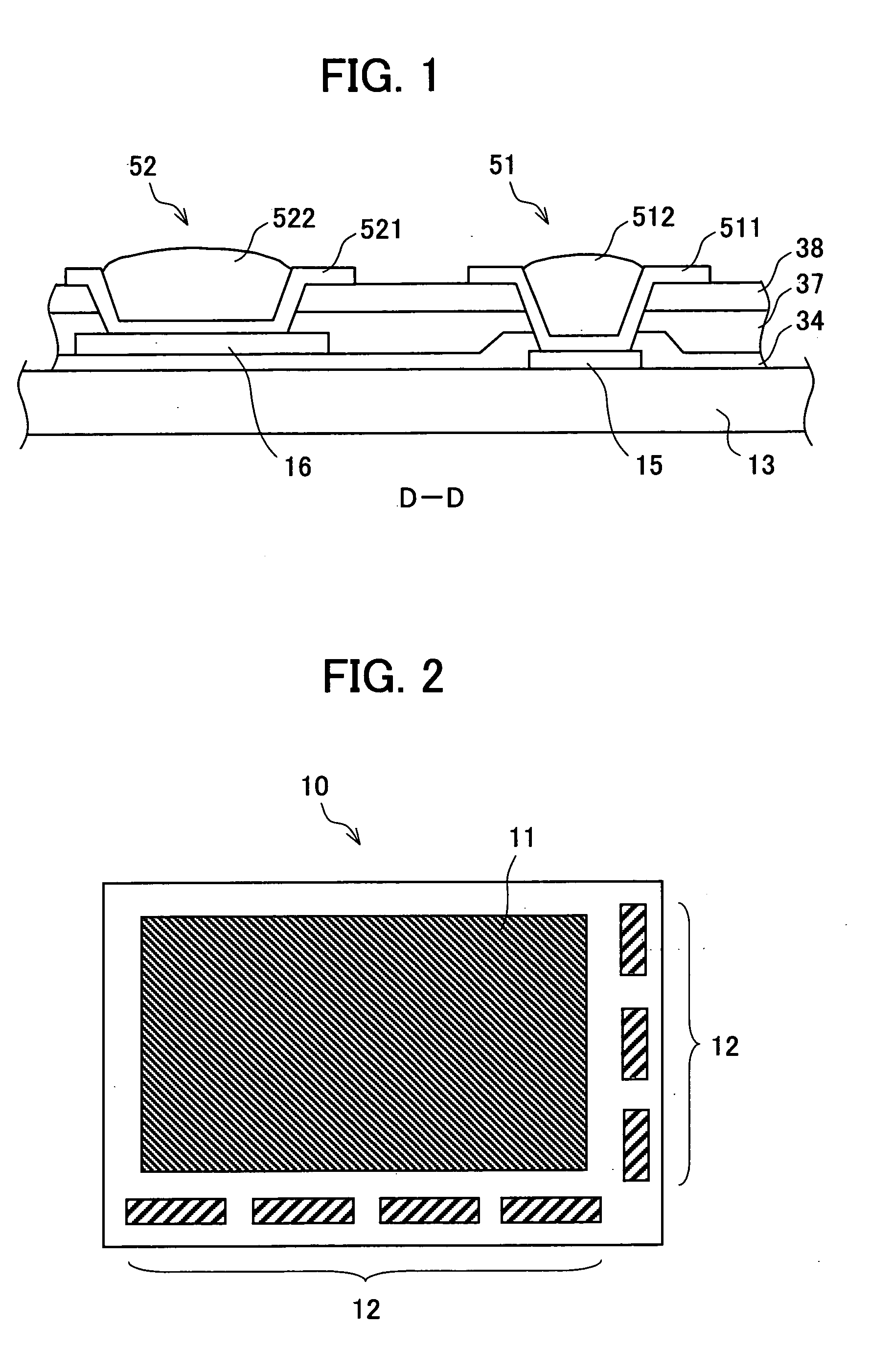Active matrix substrate and manufacturing method thereof, and electronic device
a technology of active matrix and substrate, applied in the direction of instruments, semiconductor devices, optics, etc., can solve the problems of increasing the thickness of signal lines and scanning lines, poor coverage characteristics of interlayer insulation layers, and damage to wires, so as to improve the resistance of a specific portion of wiring and reduce the resistance of a process environment
- Summary
- Abstract
- Description
- Claims
- Application Information
AI Technical Summary
Benefits of technology
Problems solved by technology
Method used
Image
Examples
Embodiment Construction
[0066] An embodiment of the present invention is described below, with reference to the Figures. The following deals with a case where the present invention is applied to manufacturing of an active matrix substrate. First described is a configuration of the active matrix substrate.
[0067]FIG. 2 is a plane view illustrating a schematic configuration of an active matrix substrate 10. As shown in FIG. 2, the active matrix substrate 10 includes an image forming region 11 and a panel-peripheral region 12. A plurality of gate lines and a plurality of source lines are arranged in the image forming region 11 so as to be orthogonal to each other. A pixel is provided in each region compartmentalized by a gate line and a source line, thereby allowing a plurality of pixels to be provided in a matrix-manner. The respective pixels provided in a matrix manner operate in the image forming region 11, thereby allowing the image forming region 11, in its entirety, to display images,
[0068] FIGS. 3 (a)...
PUM
| Property | Measurement | Unit |
|---|---|---|
| length | aaaaa | aaaaa |
| length | aaaaa | aaaaa |
| length | aaaaa | aaaaa |
Abstract
Description
Claims
Application Information
 Login to View More
Login to View More - R&D
- Intellectual Property
- Life Sciences
- Materials
- Tech Scout
- Unparalleled Data Quality
- Higher Quality Content
- 60% Fewer Hallucinations
Browse by: Latest US Patents, China's latest patents, Technical Efficacy Thesaurus, Application Domain, Technology Topic, Popular Technical Reports.
© 2025 PatSnap. All rights reserved.Legal|Privacy policy|Modern Slavery Act Transparency Statement|Sitemap|About US| Contact US: help@patsnap.com



